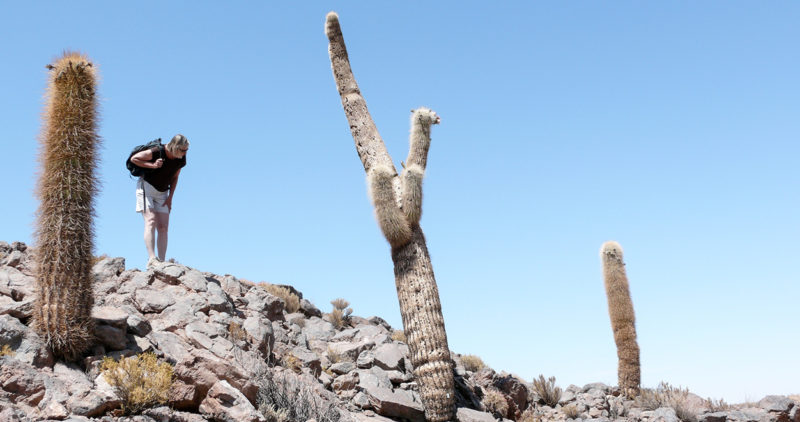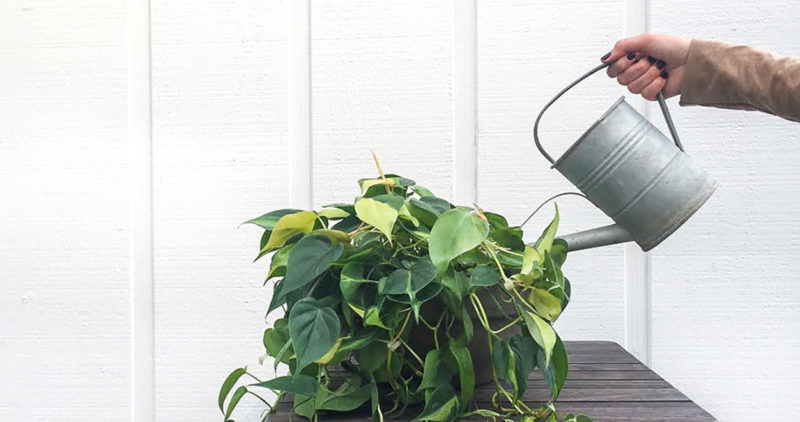
Sanseverias are very forgiving. Because they’re so forgiving and adaptable to a wide variety of home environments, sansevierias are always included in lists suggesting plants for new plant parents, busy people, and those with a self-diagnosed “black thumb.” But, focusing only on how readily we can ignore sansevierias really doesn’t do justice to how amazing these plants are. Plants in the genus Sansevieria are a diverse group of over one hundred species demonstrating a wide variety of forms, colors, sizes, and growth habits. Indestructibility is an admirable quality in a houseplant, but once you get to know sansevierias, you’ll find there’s a lot more to love about them than that.
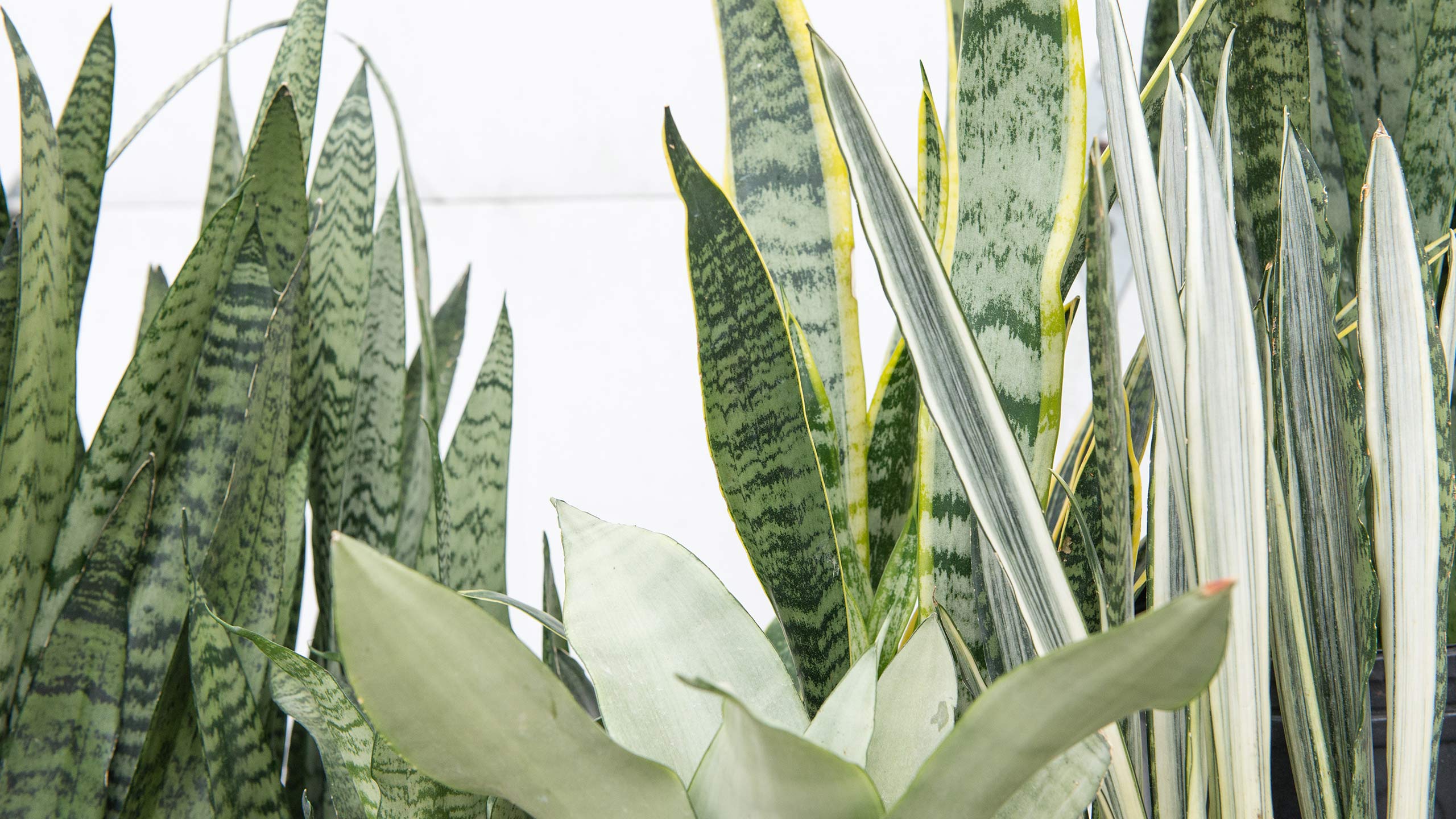
Sansevierias Are a Bit Addictive
The variety of forms, colors, and variegations you can find among the sansevierias is astonishing, and more and more unusual types are finding their way to our greenhouse tables. Recently, we’ve had several different cultivars to choose from including tall, short, and cylindrical forms. You’ll probably recognize the popular Sansevieria ‘Laurentii’ and S. ‘Zeylanica’. ‘Laurentii’ has a tall, upright form with glowing yellow stripes along strappy, bright green leaves. And perpendicular to the yellow stripes are ripples of alternating shades of green. ‘Zeylanica’ has a similar form, but its horizontal rippled stripes alternate in soothing shades of silver and grayish-green. Sansevieria ‘Black Coral’ has a slightly darker – almost black-green – background alternating with its gray-green stripes. Sansevieria ‘Black Gold’ is even more striking. It has the long, bright yellow stripes running along the leaf margins like ‘Laurentii’, but the area between these stripes is almost entirely black-green. And if you prefer all your stripes to be vertical, try S. ‘Bantel’s Sensation.’ It has alternating white and gray bands that run the entire length of each leaf.
Not all of our sansevierias have tall strappy leaves like the ones above. Sansevieria ‘Superba’ is often called bird’s nest sansevieria because its leaves are short and wide and form a rosette shape, somewhat like a bromeliad. Sansevieria ‘Moonshine’ is another bird’s nest type, but the leaves are even broader, and its color is completely different with an almost ghostly shade of soft silvery-gray and no striping at all. And then there are Sansevieria ‘Fernwood’ and S. ‘Lancia,’ which are unique in their own ways too. These two have horizontal striping like some of the others, but their leaves are cylindrical and come to a point.
And, be sure to search our assortment of 3” and 4” succulents for any sansevieria that may be hiding there too. Some small, unusual, and rarely seen species such as Sansevieria suffruticosa and S. canalicalata have been known to make an appearance from time to time. If you see one, grab it when you do because they may not show up again for a while.
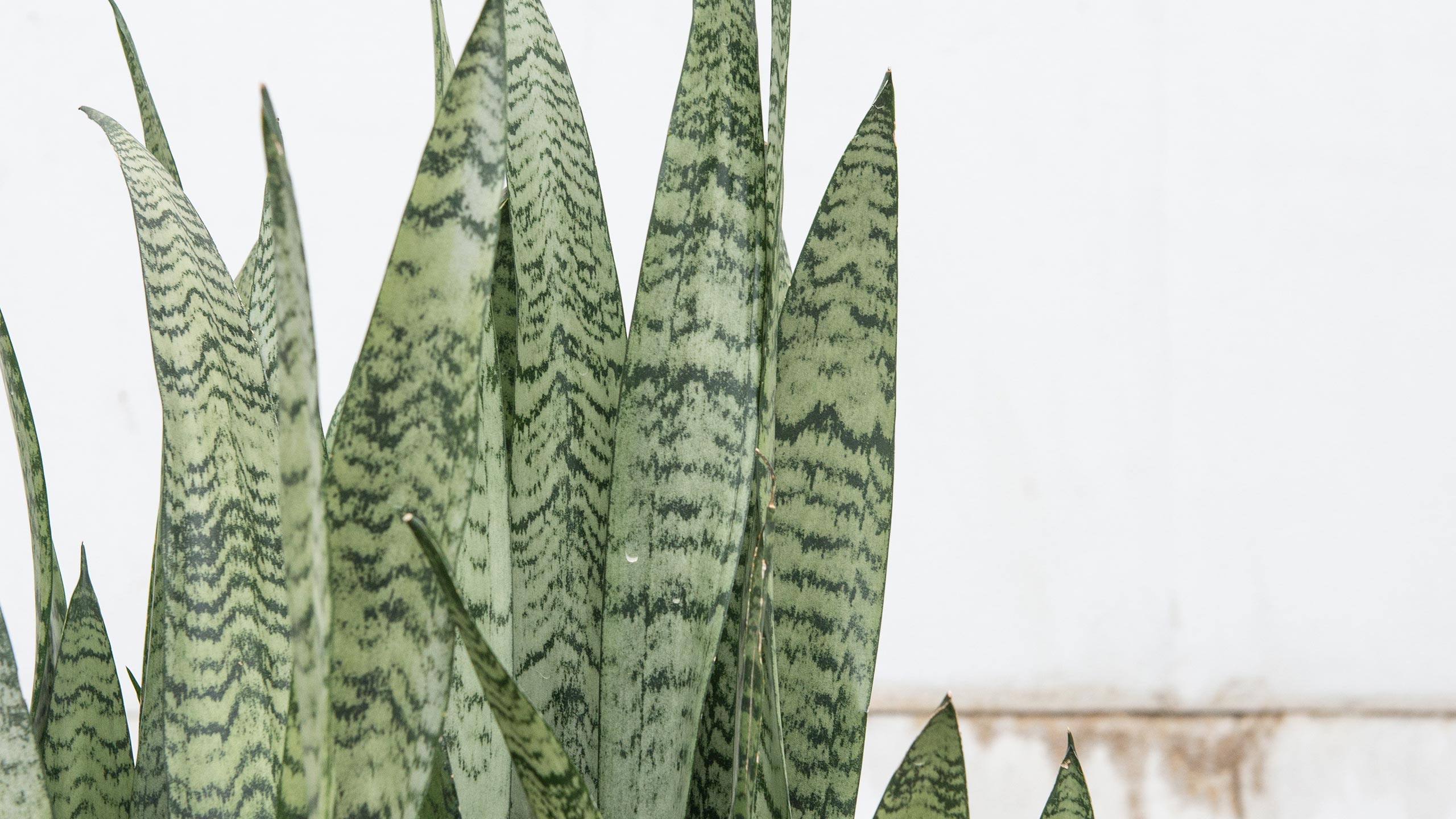
Sansevieria Will Surprise You Occasionally
Sansevieria may sit quietly for months and years at a time, but then one day, they’ll throw a surprise at you. They may suddenly produce a slender flower stalk – straight up from the soil and covered in buds. After several days, creamy white lily-like flowers will open, and you’ll be greeted with the most pleasantly sweet fragrance. If this happens, it’s truly an event worth acknowledging. Do a dance, call your plant friends, and take pictures because it may not happen again for years.
Then there are some sansevieria who decide to go on a little vacation outside their pot. Marketing team member Jenny Beukenhorst has a Sansevieria suffruticosa that she discovered among our small succulent assortment. After several years of growth, it suddenly developed two “arms,” each with a smaller version of itself growing on the end. These “arms” are called stolens, and it’s this species’ way of reproducing itself. Jenny set a new pot of cactus mix under the two babies, and after the new plants rooted on their own, she was able to cut them apart from the mother plant. More commonly, you might see a sansevieria’s grow pot warp into odd shapes as the strong rhizomes under the soil begin to fill the pot – sometimes even busting through the plastic. Then you’ll know it’s finally time to repot. If this happens, select a new grow pot that’s only a couple inches bigger than the old one – although they sometimes break out, sansevierias actually prefer being pretty root bound.
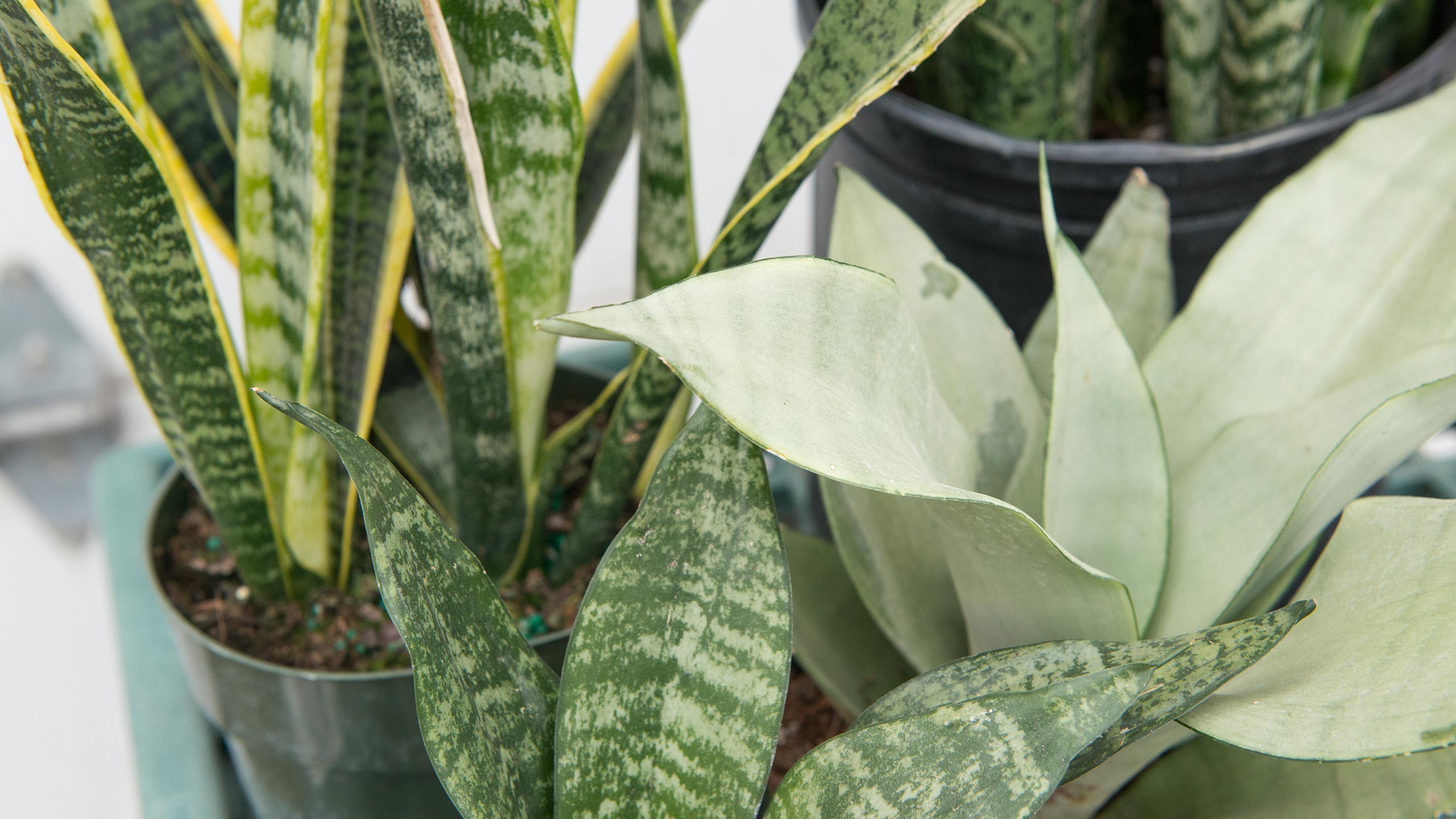
And Yes, Sansevierias Are Very Easy to Care For
When it comes to caring for a sansevieria, less is definitely more. They’re fine with dry soil, they hardly ever need repotting, and you’ll only need to fertilize once during the growing season, if at all. But, although they have a reputation for tolerating neglect and dark corners, that doesn’t mean they don’t appreciate a little attention too. You’ll find your sansevieria will grow better and put on more vivid variegations if they’re in a bright location and receiving more regular water. Just remember that the brighter the light, the more water it’ll want. And be sure not to let it sit in water for any length of time either – that’s about the only way to hurt a sansevieria.
So, hopefully, the next time you see a sansevieria, you’ll appreciate its unique beauty and some of the more unusual tricks it’s capable of showing you. You may even find yourself a collector before you know it.


